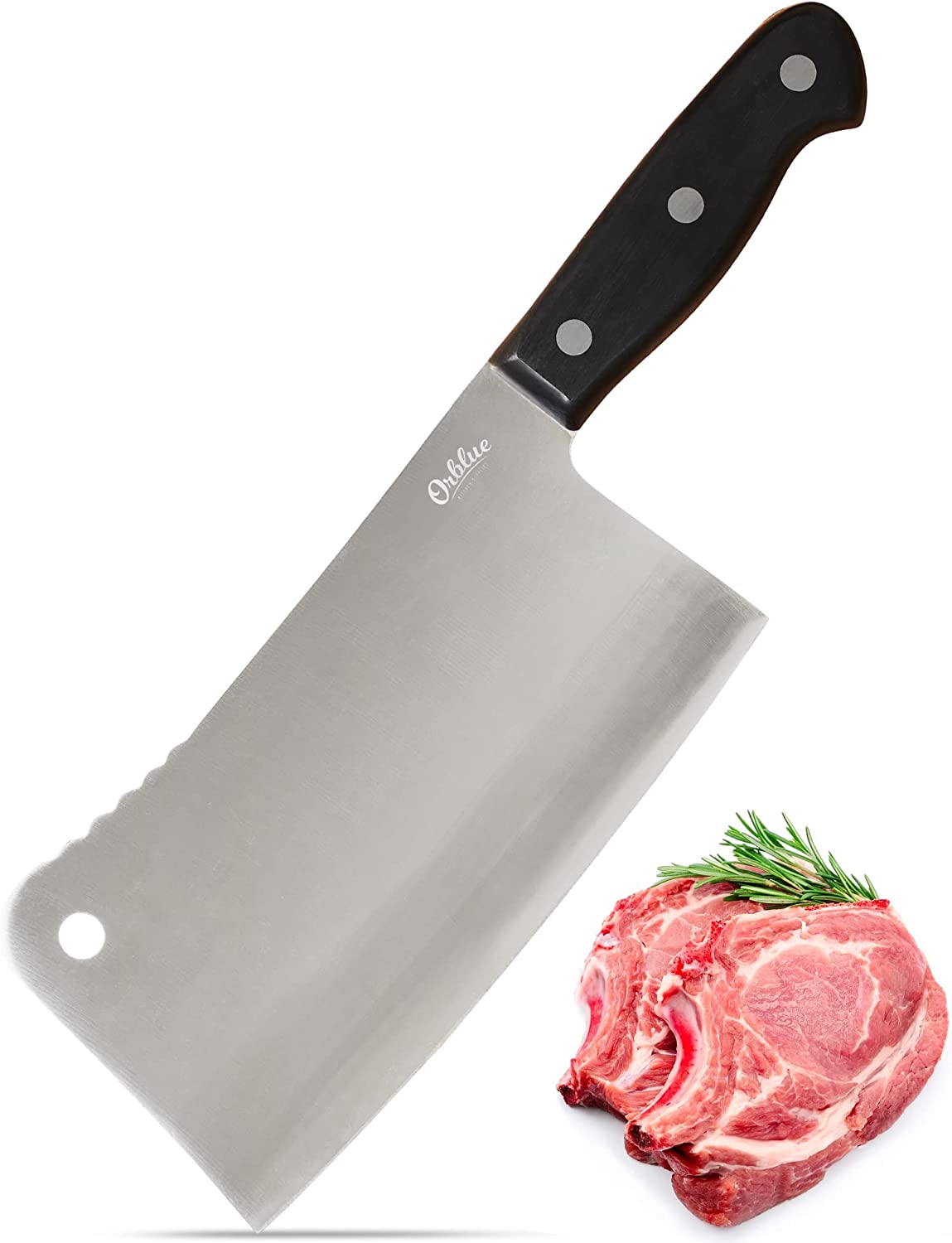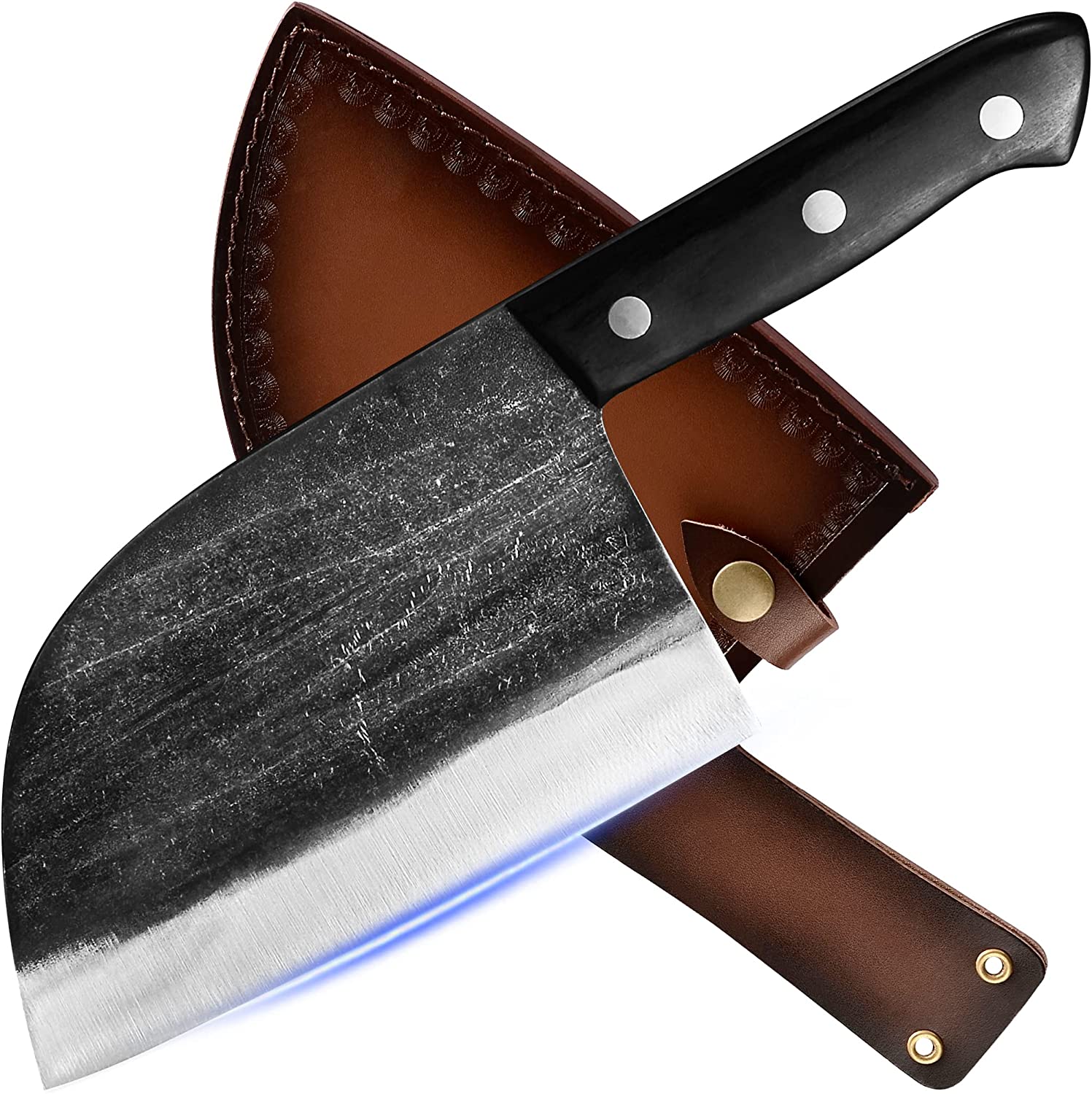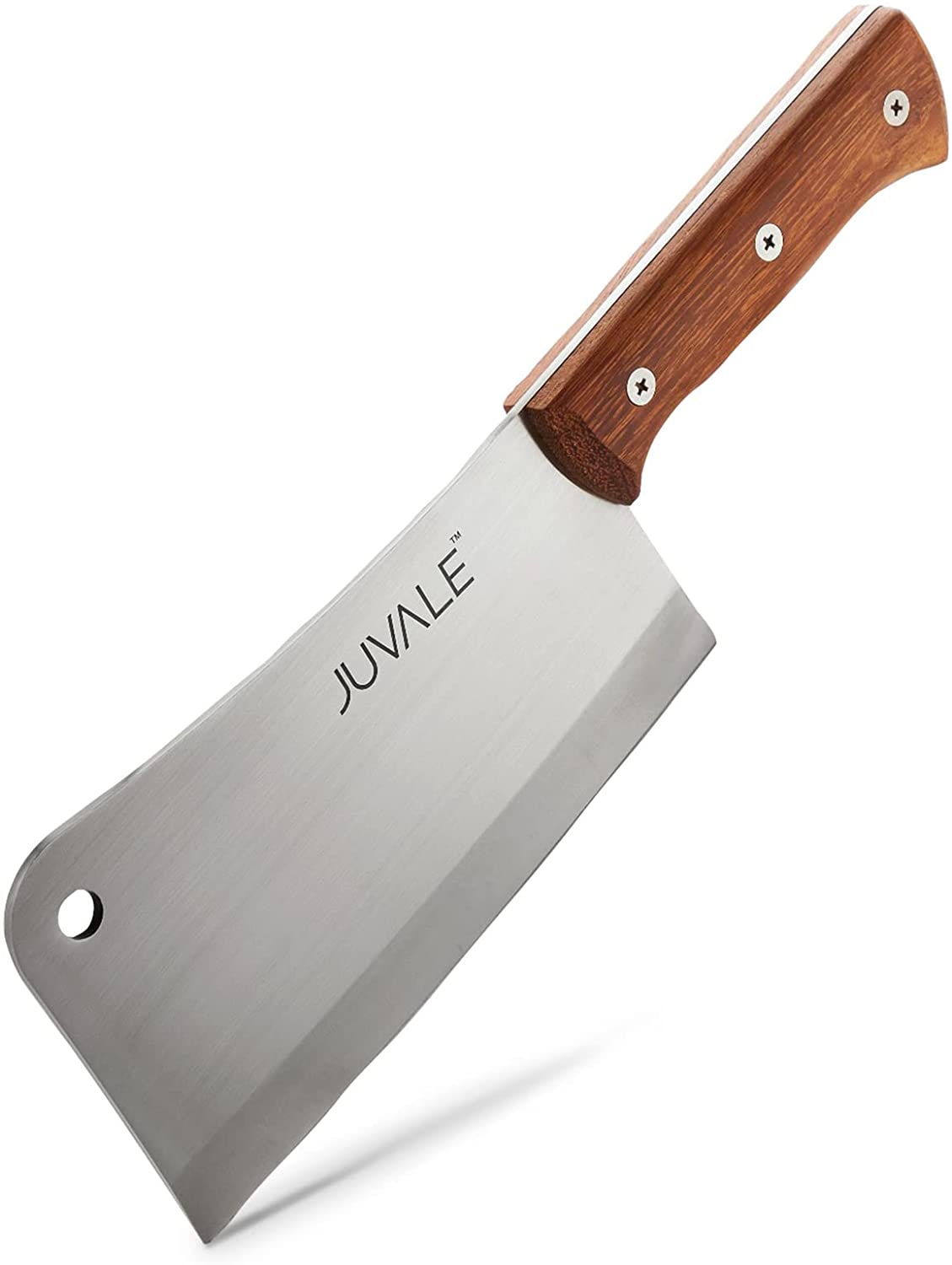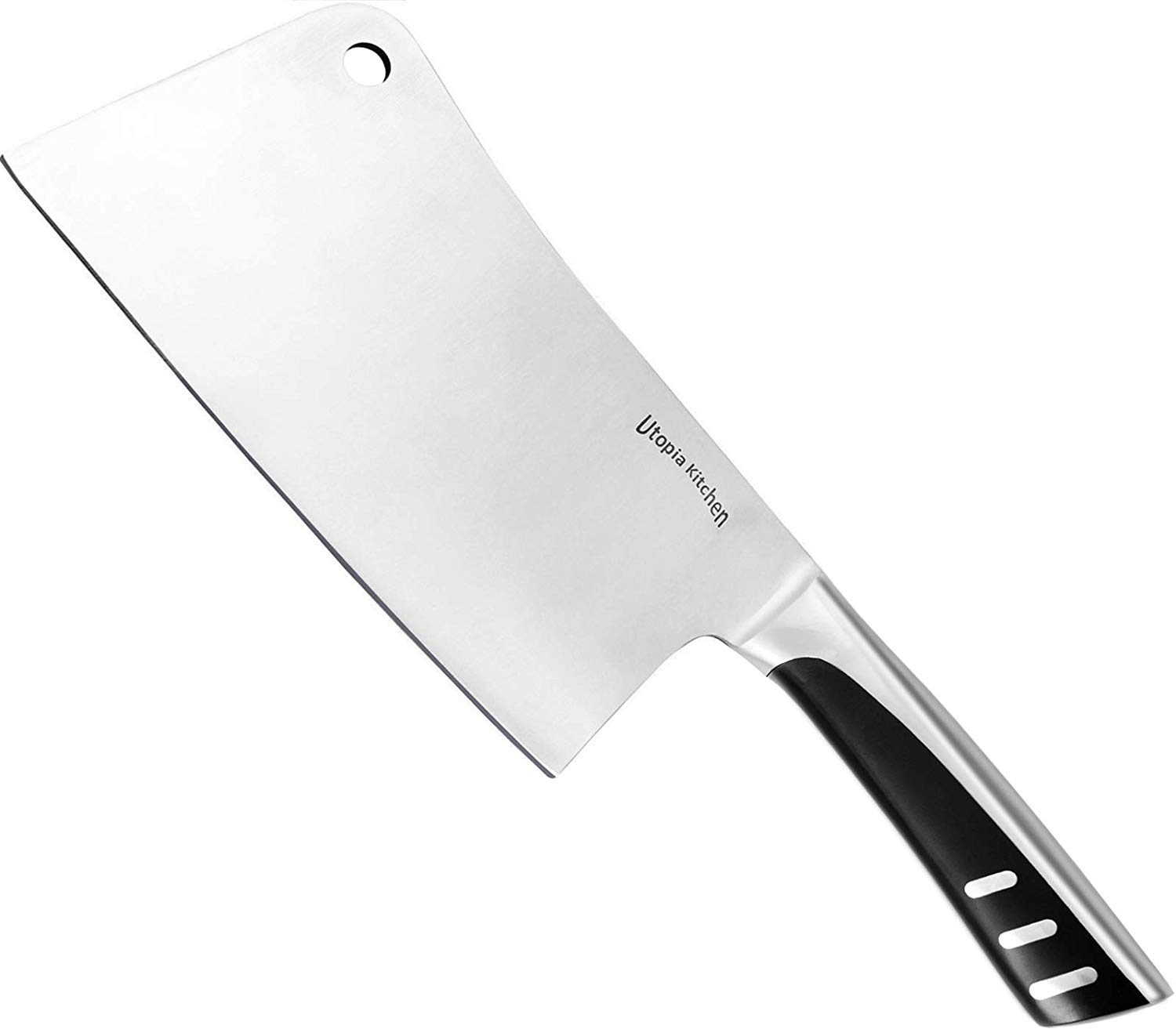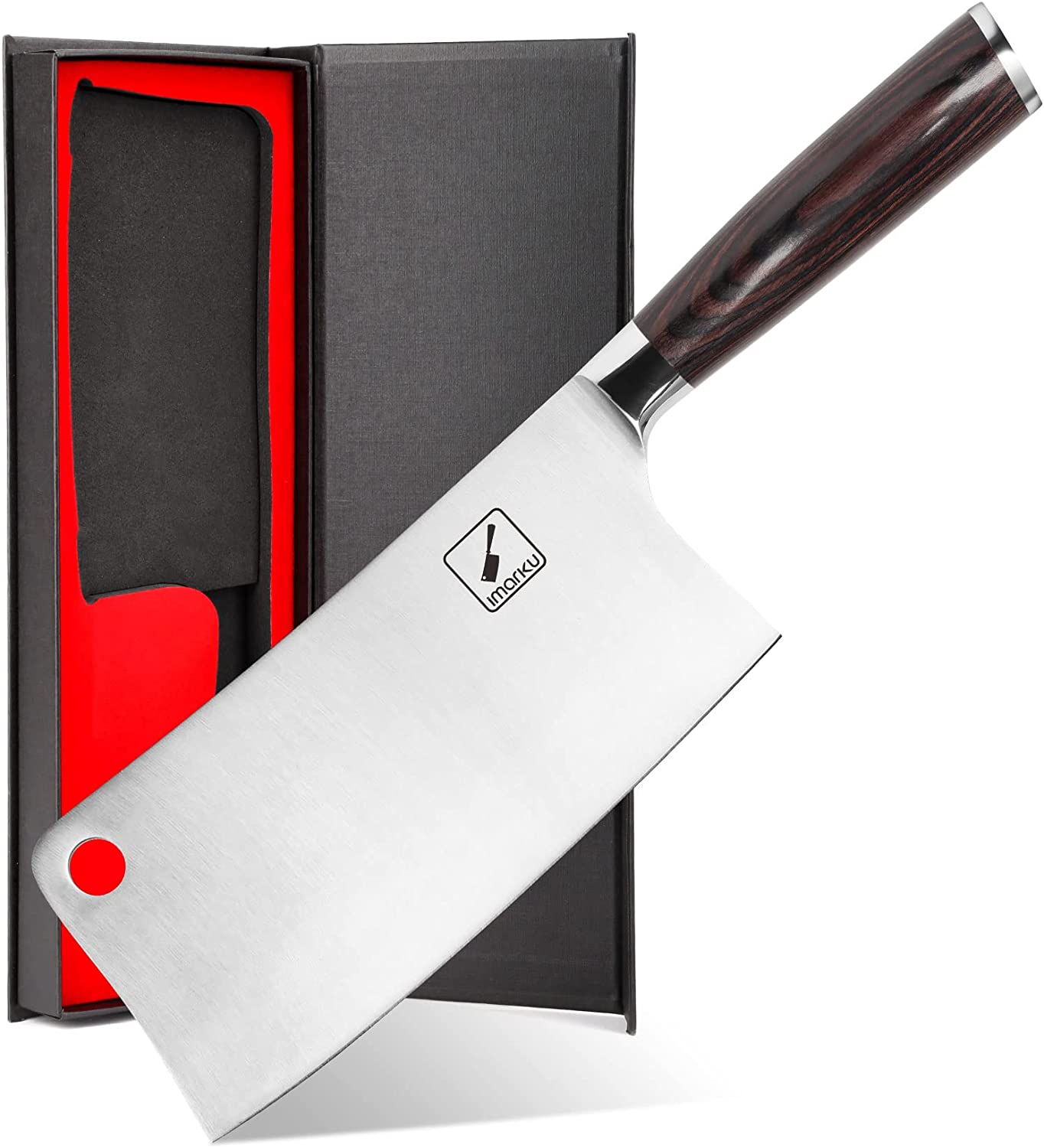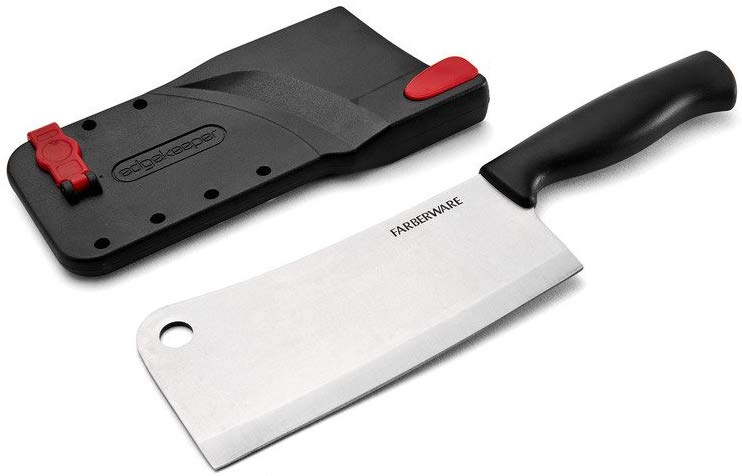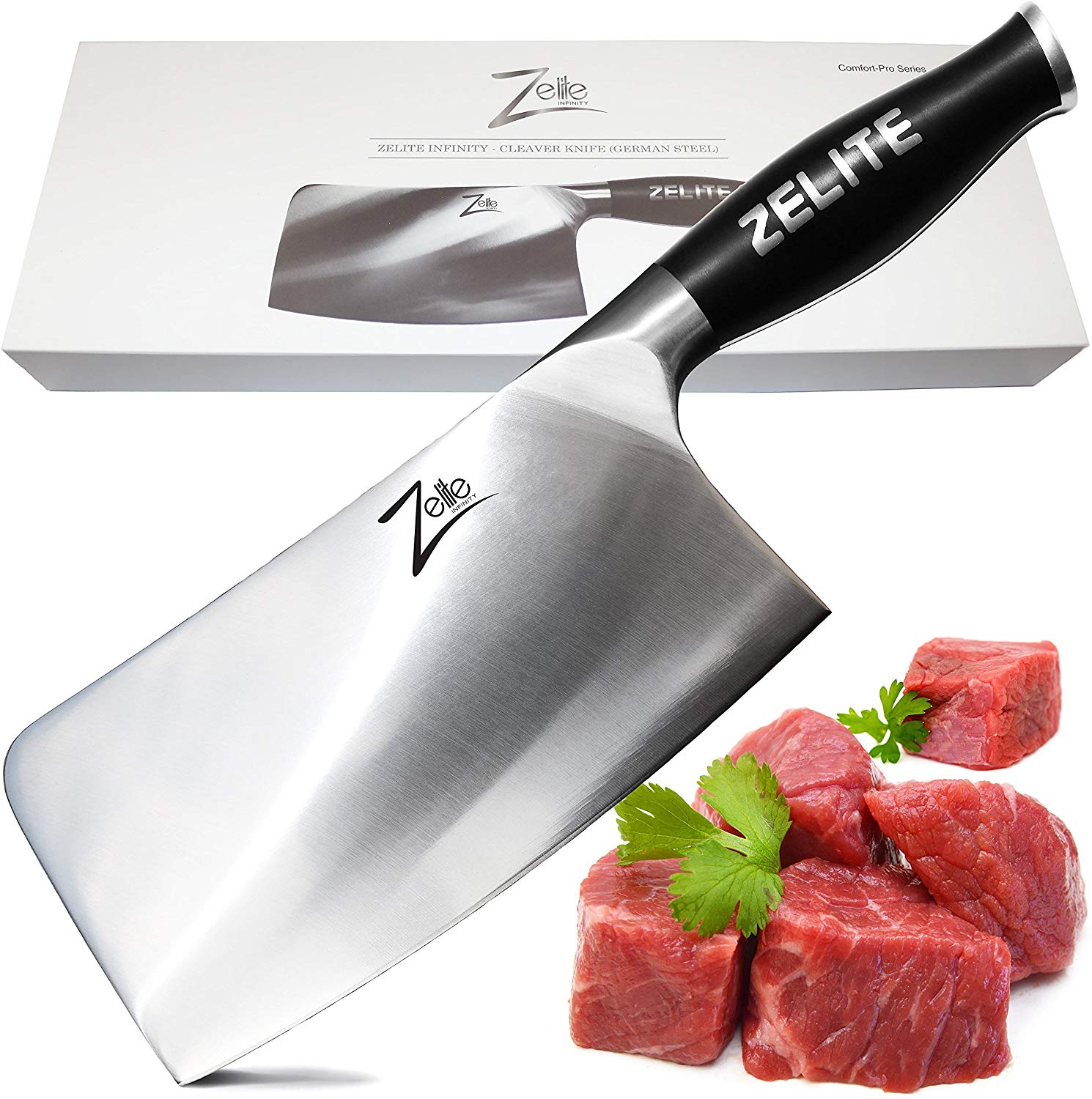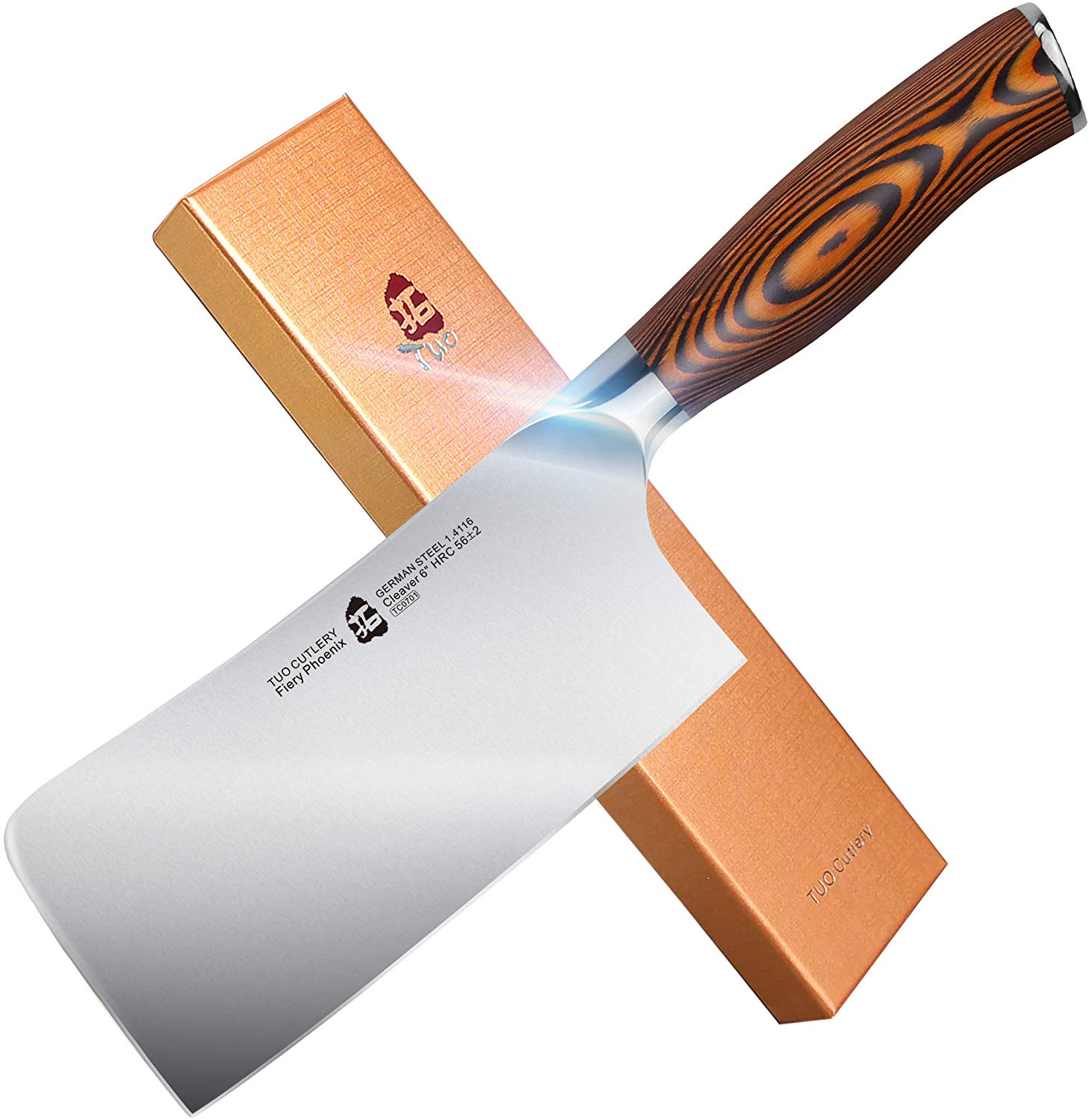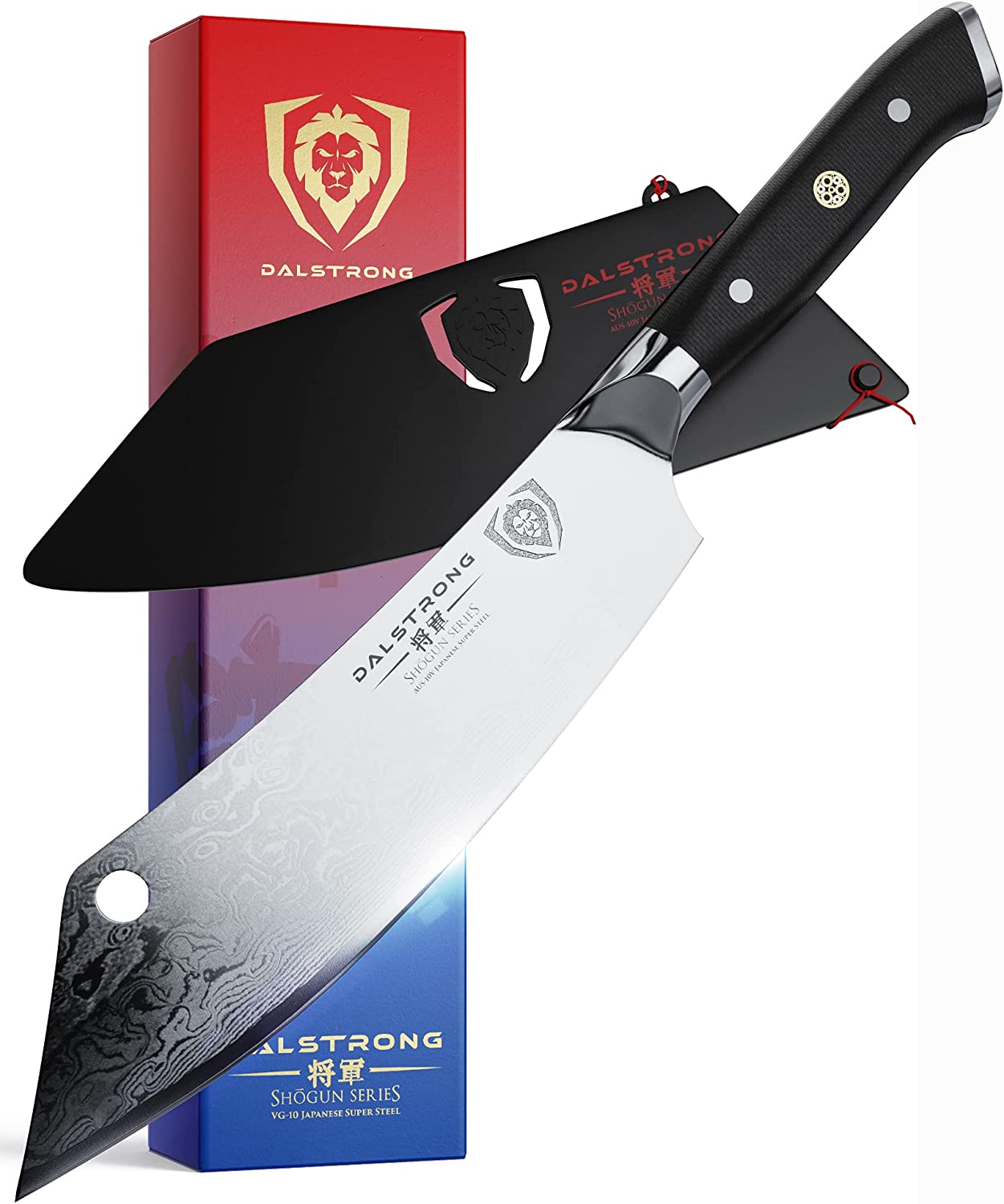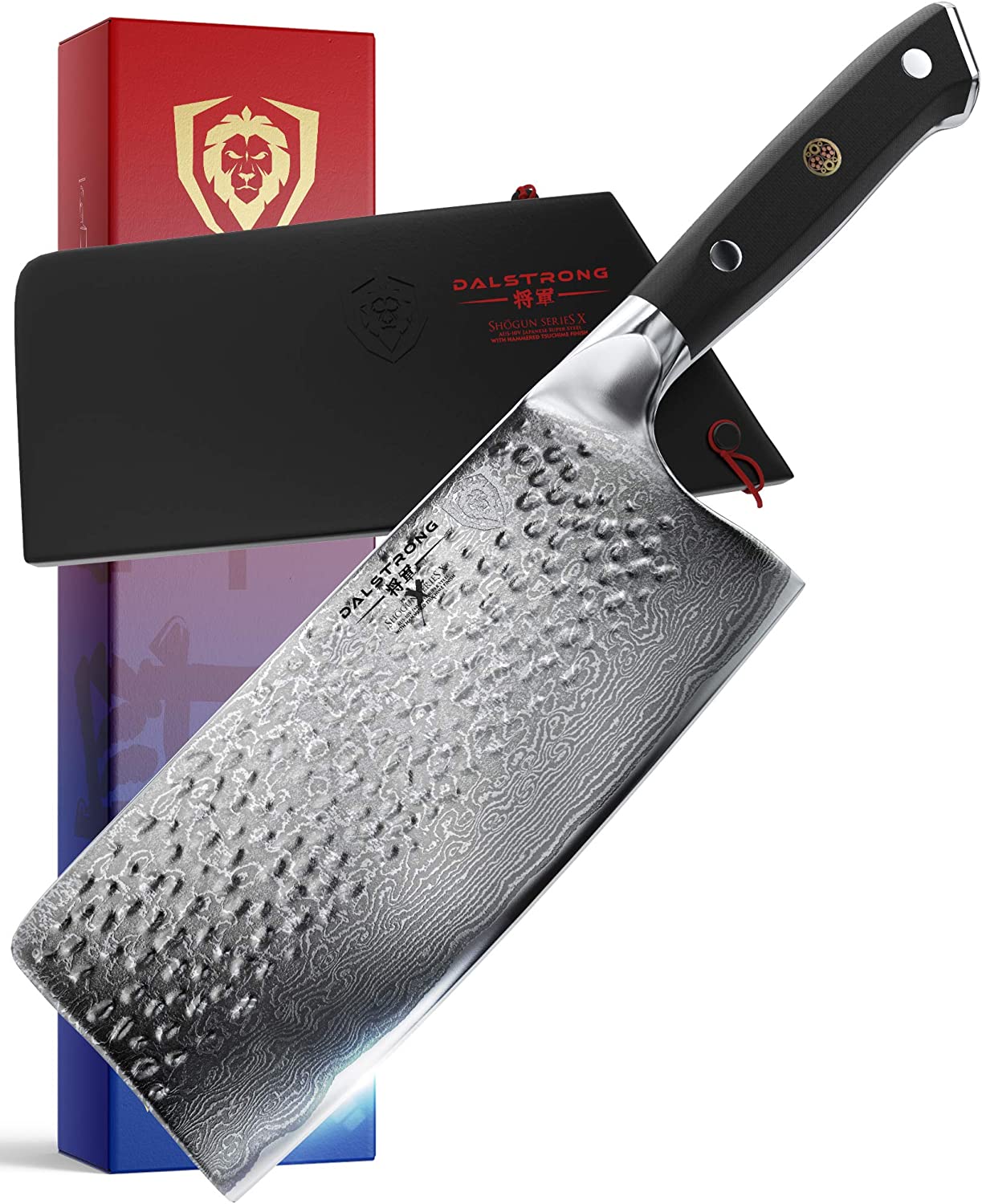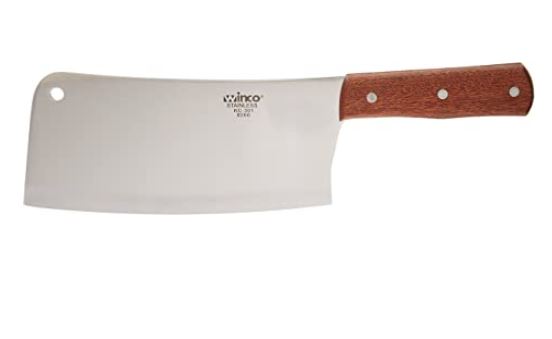Orblue Ergonomic Easy Clean Meat Cleaver
Last updated: August 31, 2022
A 7-inch blade gives this meat cleaver plenty of power, along with a sturdy, sharp blade. The heavy build makes it easy to slice through thick cuts of meat. Stainless steel construction helps it hold up through many uses and washings.
We looked at the top Meat Cleavers and dug through the reviews from some of the most popular review sites. Through this analysis, we've determined the best Meat Cleaver you should buy.
Product Details
Key Takeaway: If you prefer matching cutlery, you can separately purchase a cooking, chef's, boning and bread knife to match this meat cleaver.
In our analysis of 83 expert reviews, the Orblue Ergonomic Easy Clean Meat Cleaver placed 11th when we looked at the top 11 products in the category. For the full ranking, see below.From The Manufacturer
Butcher Knife Why Orblue? We are a brand that focuses on quality and lifelong customer support to ensure the best possible user experience. butcher knife Must have for every meat lover! cleaver knife cleaver knife cleaver knife So sharp that it cuts faster and cleaner with minimal effort Comfortable design that gets you through the biggest chopping sessio Prepare your meat like a professional chef butcher knife
Our Expert Consultant

Culinary Expert
Julie Chernoff is a long-time member of Les Dames d’Escoffier (past president of the Chicago Chapter, and current co-chair of the LDEI Legacy Awards Committee), the Association of Food Journalists (AFJ) and the International Association of Culinary Professionals.
Chernoff is the dining editor of Better, a lifestyle website and print magazine. Her journalism started in the test kitchens of Weight Watchers Magazine. She holds a BA in English from Yale University and is a graduate of the California Culinary Academy. She has spent the last few decades styling, photographing, teaching, developing recipes, editing, thinking and writing about food.
